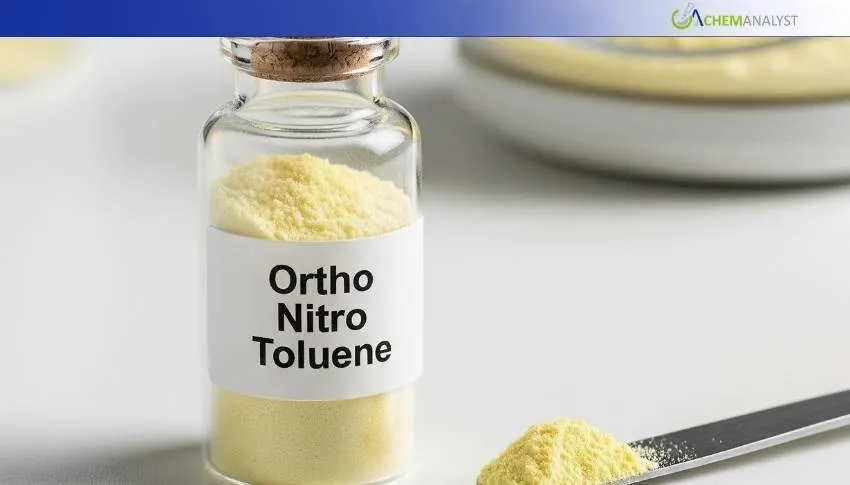Welcome To ChemAnalyst

During August 2025, Asia's Ortho Nitro Toluene market continued to feel pressure from sustained oversupply and demand. In India, prices fell 1.80% at the beginning of August, then more in the middle of the month driven by poor demand from dyes and textiles. Prices were supported by stable feedstock prices and steady production, but price support was limited by buyers being cautious of overwhelming inventories and feeding off the weak downstream interest. In China, FOB prices were down by 1.58% in the first part, with further decreases because of muted demand specifically for exports to Japan and South Korea. Producers were normal in production levels, but downstream interest was subdued, and procurement was tentative. Overall, the market continued to face a supply-demand mismatch throughout Asia and the whole region.
The Asian Ortho nitro toluene market remained under pressure throughout August 2025, with both India and China experiencing further price declines under stable feedstock conditions. In India, Ortho Nitro Toluene (ONT) prices declined 1.80% in the first week and continued a 12-week bearish trend. Although toluene CFR prices have stabilized this week, toluene prices benefitted from moderate crude oil prices and improved downstream demand, domestic oversupply and reduced fundamental spot interest outweighed these factors causing price decline for Ortho Nitro Toluene. Operationally Ortho Nitro Toluene continued to run steady with aromatic feedstock meeting over 65% of local demand and average feedstock availability.
During the second week in August, Ortho Nitro Toluene prices in India continued to fall, declining another 1.4% as weak demand from the dyes and textile sectors reduced procurement activity. Sellers trimmed offers slightly in hopes of drawing in a few buyers, as downstream was operating under capacity and there was comfortable stock availability. Overall, Ortho Nitro Toluene manufacturing activity was steady, supported by stable toluene input costs, and inventory levels were in a reasonable range. Producers lowered prices to stimulate orders to attempt to offset soft overall offtake.
By mid-August, Ortho Nitro Toluene prices in India had stabilized, seeing no movement for two weeks. While this pause in the downward trend of Ortho Nitro Toluene prices demonstrated muted market activity and risk averse buying habits, end-users were deferring new purchases, relying on their existing inventories, and textile and dye processing units were running at reduced capacities.
The average FOB prices for Ortho Nitro Toluene in China declined by 1.6% the first week of August marking the continuation of a bearish trend that now spans 12 weeks. It is worth mentioning that feedstock toluene prices have stabilized at higher levels and no refineries have shut down. However, weak international demand from Japan and South Korea weighed heavily on sellers. Ultimately, overall sellers of Ortho Nitro Toluene in the market were under pressure because of limited demand, and hence, export buyers chose not to increase spot purchases across all downstream activity, including dyes and pigments. The Ortho Nitro Toluene Chinese producers were running at normal levels of production without any supply disruption or port closure activities.
The latter part of August continued to show weaknesses in China’s Ortho Nitro Toluene market. Prices on an FOB basis fell another 1.0%. Textile export orders did show some slight improvements, however actual purchases remained hesitant. The weaving rates in Jiangsu and Zhejiang remained steady, and downstream buyers were more focused on recovering capital than restocking inventory. Given the bountiful supply and weak demand both domestically and abroad, ortho nitro toluene prices across Asia were under pressure throughout the month.
With stable upstream toluene costs and a consistent production outlook, the ortho nitro toluene market within Asia is now facing a supply and demand imbalance. Without recovery in demand from key sectors or international buyers restocking process, prices are likely to be under negative pressure into September. Currency fluctuations and crude-linked feedstock fluctuations will still be closely monitored by market players.
We use cookies to deliver the best possible experience on our website. To learn more, visit our Privacy Policy. By continuing to use this site or by closing this box, you consent to our use of cookies. More info.
